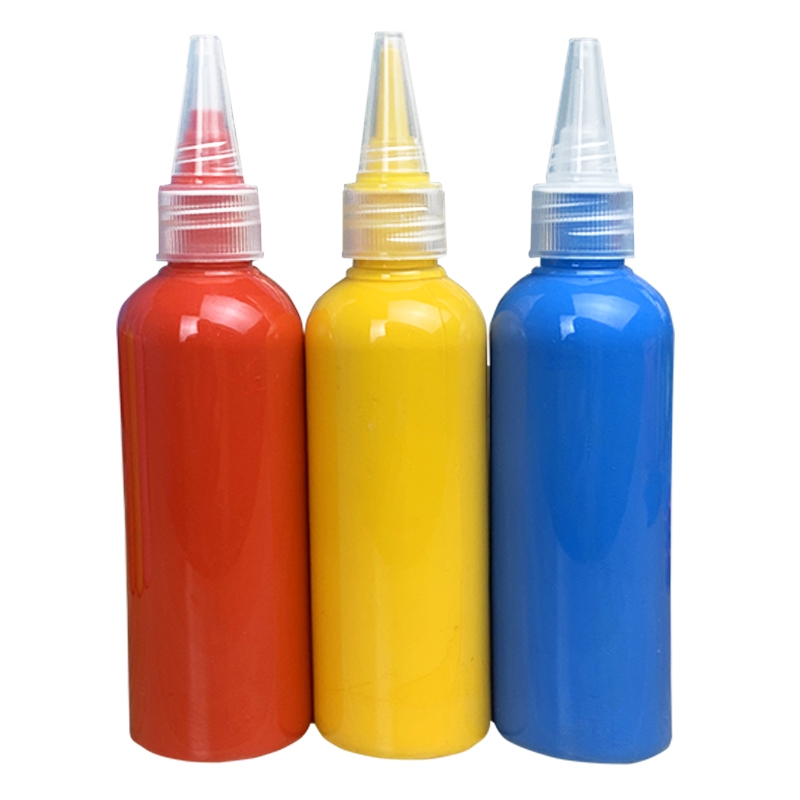Microbial degradation of water-based pigments
Waterborne pigments are very sensitive to microbial attack. In general, all organic pigments can be used by a variety of bacteria to become a source of carbon and nitrogen for bacteria. In all pigment tests, yellow pigments are most susceptible to microbial degradation due to organic components. Throughout the continuous process, bacteria are the first intruders, and then the fungus begins to grow, causing damage to the pigment slurry. Due to the production of degraded low molecular weight compounds and sulfides, the pigments have an unpleasant odor; and due to the precipitation reaction caused by bacteria, the product is discolored and the viscosity is increased.
Bacterial degradation can occur in two major stages, ultimately leading to fungal growth. In the first stage, aqueous bacteria or pigment-related bacteria play a major role. This group of bacteria mainly represented by Pseudomonas, Proteus, Enterobacter, and Citrobacter has a major degradation effect. There is a hypothesis that these bacteria can secrete exogenous enzymes, break down pigments and other components (such as lecithin and surfactant molecules), and undergo fermentation reactions to generate gases, emit odors, and lower the pH. In the second stage of pigment damage, bacteria (such as staphylococci) utilize metabolic by-products and form a precipitation reaction through the secretion of lecithinase on lecithin, which leads to an increase in irreversible viscosity and a pungent odor. In order to avoid degradation of the pigment slurry, the following protective measures must be taken.
Raw material microbial load check
Many health audits around the world have found that pigment powders have been contaminated with Gram-positive bacteria and some Gram-negative bacteria. The yellow and green pigments were found to be the most susceptible to contamination. At the same time, it is found that water is also polluted, and water is also the primary source of pollution and degradation. If the source of contamination of the final product is a lecithin-producing bacterium, although lecithin itself does not increase any contamination, it has a significant effect on viscosity. Water is also considered a source of pollution. The most common Gram-negative bacteria are the primary sources of degradation of the final product. At the same time, these bacteria can also inhibit common fungicides.
Equipment hygiene
Improper cleaning of the equipment can also increase the amount of contaminants in the pigment slurry. If the storage time is too long, the stored water, even RO (reverse osmosis) water, may also have the possibility of producing microorganisms. When the premixed tank or tank is washed with such water, it will eventually increase the contamination of the product. Better hygiene measures can improve the biodegradability of the product and increase the degradation resistance by 20% to 30%.
Pre-finished storage
Many pigment manufacturers store semi-finished products before the finished product. This also provides an opportunity for the reproduction of bacteria, in fact the amount of bacteria is higher than the estimated value - which also poses a challenge to determine the correct concentration of bacteria.
Unsuitable fungicide in the product
Pigment degradation is produced by the action of enzymes secreted by microorganisms. Therefore, it is important to check the enzymatic activity of the final product. Once the lecithin is very active during the production process, the precipitation reaction is accelerated and a cascade reaction is formed, which is an inevitable and irreversible process. Commonly used preservatives (such as CMIT/MIT) are effective for membrane systems, and inhibition of cell division by reaction with thiol groups is not well understood in enzymes such as lecithin. Adding preservatives that only release formaldehyde at the allowed doses is not effective. The best remedy is to use a preservative with enzyme inactivation activity and bactericidal activity.
Test criteria
Before performing a performance test on a contaminated pigment slurry containing the tested biocide, one must ensure that the contaminated material (waste or water) contains all types of bacteria that serve as a different bond during the continuous destruction of the product. effect. In general, metamorphic materials and heavily polluted water only play a role in the second stage of bacterial destruction, thus demonstrating that they have no absolute effect on viscosity increase and contamination. This will not get the actual effect and dose estimate of the preservative being tested.
For yellow pigments, CTAC (cetyltrimethylammonium chloride) was found to be very effective at the lowest dose (0.1% or less) because they only worked against formaldehyde fungicides. They can deactivate the viscosity-enhancing lecithinase and inhibit the growth of bacteria. DBNPA (2,2-dibromo-3-cyanopropionamide) also reacts with enzymes to kill 99.9% of bacteria, but its degradation rate is very fast, which means it does not stay too long in the system. (more than 48 hours), after it degrades, the growing microorganisms will quickly return to the system. Good biocides, better hygiene and the right test guidelines will bring the expected shelf life of the water-based pigments.





